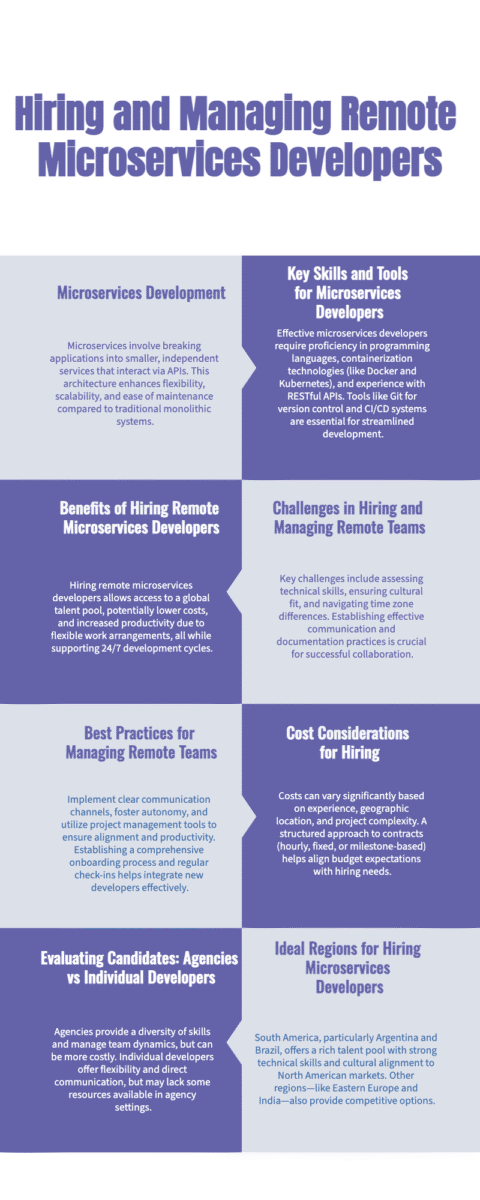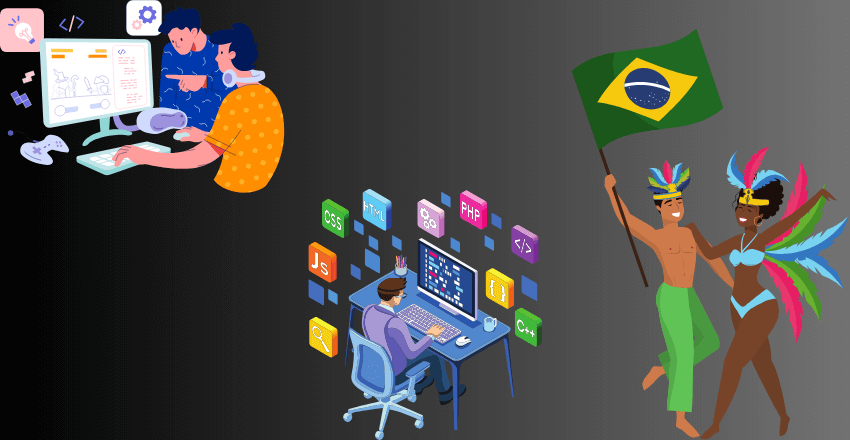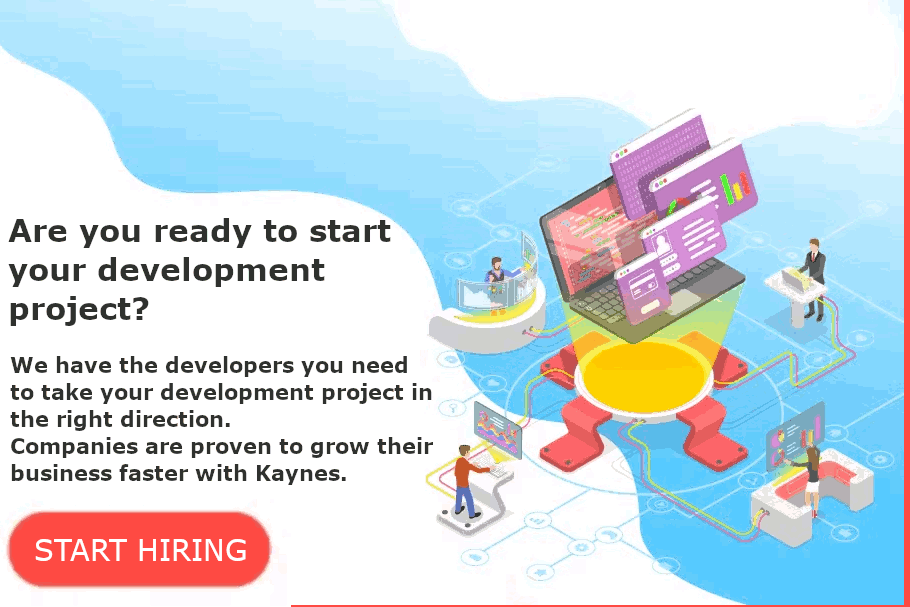
Hiring Playbook for Microservices Developers: A Simple Guide
Hiring the right microservices developer can feel like navigating a labyrinth, with many falling for the myth that any full-stack developer will do. This misconception, coupled with the belief that top talent only exists in Silicon Valley, has led to subpar software, inefficient teams, and inflated costs.
Thank you for reading this post, don't forget to subscribe!Drawing from over a decade in the tech industry, I’ve crafted a playbook that not only simplifies the hiring process but also reveals how looking beyond geographical limitations—particularly to South America—can connect you with extraordinary, specialized talent at a fraction of the cost. Here’s how to find and manage the competent, experienced and skilled microservices developers your business needs:
What is a microservices developer?
A microservices developer is a software engineer who specializes in designing, building, and maintaining applications using a microservices architecture. Unlike traditional monolithic systems, microservices break down applications into smaller, independent services that communicate via APIs. This approach allows for greater flexibility, scalability, and easier maintenance of complex systems.
What does a microservices developer do?
Microservices developers wear many hats in their day-to-day work:
- Designing service architectures
- Developing individual microservices
- Implementing inter-service communication
- Ensuring service resilience and fault tolerance
- Containerizing services for deployment
- Monitoring and maintaining microservices in production
For example, a microservices developer working on an e-commerce platform might create separate services for user authentication, product catalog, shopping cart, and payment processing. Each service would be developed and deployed independently, allowing for rapid iterations and updates without affecting the entire system.
What skills should a microservices developer have?
To excel in this role, microservices developers need a diverse skill set:
- Proficiency in multiple programming languages (e.g., Java, Python, Go)
- Strong understanding of RESTful APIs and message queues
- Experience with containerization technologies (Docker, Kubernetes)
- Knowledge of cloud platforms (AWS, Azure, Google Cloud)
- Familiarity with database systems (both SQL and NoSQL)
- Understanding of DevOps practices and tools
What are the key qualifications for a microservices developer?
While specific qualifications may vary depending on the organization, most microservices developers should possess:
- A bachelor’s degree in Computer Science or related field
- 3-5 years of experience in software development
- Demonstrated experience with microservices architecture
- Strong problem-solving and analytical skills
- Excellent communication and collaboration abilities

What are the common tools used by microservices developers?
Microservices developers leverage a variety of tools to streamline their work:
- Version control: Git, GitHub, GitLab
- Containerization: Docker, Kubernetes
- CI/CD: Jenkins, Travis CI, CircleCI
- Monitoring: Prometheus, Grafana, ELK stack
- API gateways: Kong, Apigee, AWS API Gateway
- Service discovery: Consul, Eureka
- Message brokers: Apache Kafka, RabbitMQ
For instance, a microservices team might use Docker to containerize their services, Kubernetes for orchestration, Jenkins for continuous integration, and Prometheus for monitoring. This toolchain enables them to rapidly develop, deploy, and maintain a complex microservices ecosystem.
Benefits and Impact of Microservices Development

The tech world is riddled with outdated assumptions: monolithic systems as the backbone of robust platforms, remote work hindering productivity, and the necessity of gathering all developers under one roof. But these myths are crumbling. Drawing from years of experience in microservices development, I’ve witnessed remote teams outperform in-house counterparts, shattering these notions.
The shift to microservices architecture, coupled with a remote work model, isn’t just a trend—it fuels unparalleled productivity, innovation, and scalability. Let me show you how embracing remote microservices developers can take your business to new heights, providing the flexibility and talent pool that traditional models lack. It’s crucial to understand the transformative impact this approach has on software development and team dynamics. Let’s explore how microservices are revolutionizing the industry and why remote work is becoming increasingly prevalent in this field.
How do microservices improve software development?
Microservices architecture offers numerous advantages over traditional monolithic systems:
- Scalability: Individual services can be scaled independently, allowing for more efficient resource allocation. For example, an e-commerce platform could scale its product catalog service during a sale without affecting other components.
- Flexibility: Teams can use different technologies for different services, choosing the best tool for each job. A company might use Node.js for a real-time notification service while using Java for a robust payment processing service.
- Faster development cycles: Smaller, independent services mean teams can develop and deploy features more quickly. This agility is crucial in today’s fast-paced market.
- Improved fault isolation: Issues in one service don’t necessarily affect the entire application, enhancing overall system reliability.
- Easier maintenance: Smaller codebases are easier to understand and maintain, reducing technical debt over time.
Benefits of hiring remote microservices developers
The rise of microservices coincides with a shift towards remote work, and for good reason:
- Access to global talent: Companies can tap into a worldwide pool of skilled developers, not limited by geographical constraints.
- Cost-effectiveness: Hiring remote developers can often be more cost-effective, especially when sourcing talent from regions with lower living costs.
- Increased productivity: Remote workers often report higher job satisfaction and productivity, leading to better outcomes for employers.
- 24/7 development cycles: With developers in different time zones, companies can achieve round-the-clock development and support.
How does remote work benefit microservices development?
The distributed nature of microservices aligns perfectly with remote work:
- Autonomous teams: Microservices promote loosely coupled services, which map well to independent, remote teams working on specific components.
- Asynchronous communication: Both microservices and remote work rely heavily on asynchronous communication, fostering a culture of clear documentation and effective collaboration tools.
- Cloud-native development: Microservices are often deployed in the cloud, making remote access and management straightforward for distributed teams.
Remote vs. in-house microservices developers: Pros and cons
While remote work offers many benefits, it’s essential to consider both sides:
Pros of remote microservices developers:
- Access to a wider talent pool
- Potential cost savings
- Increased flexibility for employees
- Diverse perspectives from global team members
Cons of remote microservices developers:
- Potential communication challenges
- Time zone differences can complicate real-time collaboration
- Need for robust remote work infrastructure and tools
Pros of in-house microservices developers:
- Easier face-to-face collaboration
- Stronger team bonding and company culture
- Simpler onboarding and training processes
Cons of in-house microservices developers:
- Limited to local talent pool
- Higher overhead costs (office space, equipment)
- Less flexibility for employees
In practice, many successful companies adopt a hybrid approach. For instance, Spotify, known for its microservices architecture, allows employees to work remotely while maintaining physical offices for those who prefer an in-person environment.
As you’ve seen, microservices development and remote work can be a powerful combination, offering benefits in scalability, flexibility, and access to global talent.
Hiring and Managing Microservices Developers

As an experienced hiring manager in the tech industry, I’ve learned that finding and managing top-notch microservices developers requires a strategic approach. Starting with:
Where to find remote microservices developers?
I’ve had great success finding talented microservices developers through various channels:
- Specialized job boards: I regularly post on platforms like Stack Overflow Jobs and Dice, which cater specifically to tech professionals.
- Specialized firms: For project-based work, Kaynes offers pre-vetted microservices experts.
- Developer communities: I actively participate in GitHub discussions and attend virtual meetups to connect with passionate developers.
- LinkedIn: I use LinkedIn’s advanced search features to find developers with specific microservices skills and experience.
Challenges in hiring remote microservices developers
I’ve encountered several hurdles when hiring remote microservices developers:
- Assessing technical skills remotely: It’s crucial to develop effective remote assessment methods, such as take-home projects or pair programming sessions.
- Cultural fit: I strive to ensure candidates align with our company culture, even if they’re working remotely.
- Time zone differences: I’ve learned to be flexible with scheduling interviews and team meetings to accommodate various time zones.
Platforms to hire microservices developers remotely
In my experience, these platforms have been particularly useful:
- GitHub Jobs: I’ve found developers with impressive open-source contributions here.
- AngelList: This platform has connected me with developers from innovative startups.
- Kaynes: Offers remote-first developers.
What to include in a job description for a microservices developer?
When I craft a job description, I make sure to include:
- Specific technical requirements (e.g., experience with Docker, Kubernetes, and specific programming languages)
- Details about our microservices architecture and the challenges we’re tackling
- Information about our remote work culture and collaboration tools
- Clear expectations for communication and availability across time zones
- Any unique perks or benefits we offer to remote employees
How to interview a microservices developer?
I’ve developed a multi-stage interview process:
- Initial screening: I ask about their experience with microservices and their motivation for the role.
- Technical interview: I dive deep into their knowledge of microservices patterns, API design, and containerization.
- Coding challenge: I give them a small, real-world microservices problem to solve.
- System design discussion: I ask them to design a microservices-based system on a whiteboard (virtually, if remote).
- Team fit interview: I introduce them to potential teammates to assess cultural fit.
How to assess the expertise of a microservices developer?
To evaluate a candidate’s expertise, I look for:
- Understanding of microservices principles: I ask them to explain the benefits and challenges of microservices architecture.
- Hands-on experience: I inquire about specific microservices projects they’ve worked on and the problems they solved.
- Knowledge of relevant tools: I assess their familiarity with containerization, orchestration, and monitoring tools.
- Problem-solving skills: I present them with scenarios they might encounter in our environment and evaluate their approach.
- Continuous learning: I look for candidates who stay updated with the latest microservices trends and best practices.
These strategies, help build high-performing remote microservices teams.
Cost and Contract Considerations

In my years of experience hiring microservices developers, I’ve learned that understanding the financial aspects is crucial.
How much does it cost to hire a remote microservices developer?
I’ve found that the cost of hiring a remote microservices developer can vary widely based on several factors:
- Experience level: Junior developers might charge $35-$50 per hour, while senior developers with specialized skills can command $150-$250+ per hour.
- Geographic location: I’ve hired developers from Eastern Europe and Southeast Asia at lower rates than those from Western Europe or North America.
- Project complexity: More complex microservices architectures often require higher-paid specialists.
- Contract duration: Long-term contracts usually come at a lower hourly rate than short-term engagements.
In my experience, budgeting $100-$150 per hour for a skilled microservices developer is a good starting point, but I always adjust based on specific project needs.
Remote microservices developer contracts and pricing
When it comes to contracts and pricing, I’ve used several models:
- Hourly rate: I prefer this for ongoing development or maintenance work. It provides flexibility but requires careful time tracking.
- Fixed price: For well-defined projects, I negotiate a fixed price. This requires a detailed scope of work to avoid misunderstandings.
- Retainer: For long-term relationships, I sometimes set up a retainer agreement, guaranteeing a certain number of hours per month at a discounted rate.
- Milestone-based: I’ve found this useful for larger projects, tying payments to specific deliverables.
Freelance vs. full-time remote microservices developers: Which is better?
I’ve worked with both freelancers and full-time remote developers, and each has its advantages:
Freelancers:
- Pros: Flexibility, specialized skills for specific projects, potentially lower costs
- Cons: Potentially less commitment, may juggle multiple clients
Full-time remote developers:
- Pros: Deeper integration with the team, consistent availability, long-term knowledge retention
- Cons: Higher costs (benefits, equipment), potentially less flexibility
My choice depends on the project’s needs. For long-term, complex microservices architectures, I prefer full-time developers. For short-term projects or specialized tasks, I often go with freelancers.
Get a quote for hiring a microservices developer
When seeking quotes, follow these steps:
- I clearly define the project scope, including expected deliverables and timeline.
- I reach out to multiple developers or agencies, providing them with detailed project information.
- I ask for a breakdown of costs, including any additional expenses like software licenses.
- I inquire about their availability and preferred contract terms.
- I always request references or case studies of similar projects they’ve completed.
Remember, the cheapest option isn’t always the best. I look for a balance between cost, expertise, and cultural fit.
In my experience, investing in the right microservices developer can significantly impact project success. While costs can be substantial, the ROI in terms of scalability, maintainability, and speed of development often justifies the expense.
Management and Best Practices

When it comes to managing remote microservices teams, your approach can make or break the project’s success. Here’s what you need to know to effectively lead your distributed team of microservices developers.
Best practices for managing remote microservices teams
To keep your remote microservices team productive and aligned, follow these best practices:
- Establish clear communication channels: Set up dedicated Slack channels for different services or teams. Use video conferencing tools like Zoom for regular stand-ups and sprint planning sessions.
- Implement robust documentation: Encourage your team to maintain comprehensive documentation for each microservice. Use tools like Confluence or GitBook to keep everything organized and accessible.
- Utilize project management tools: Implement Jira or Trello to track tasks, sprints, and overall project progress. This keeps everyone on the same page, regardless of their location.
- Foster a culture of autonomy: Trust your developers to make decisions about their specific services. This aligns well with the microservices philosophy of decentralized governance.
- Regularly review architecture: Schedule periodic architecture review sessions to ensure all services are evolving cohesively and adhering to agreed-upon standards.
How to onboard a remote microservices developer effectively
Onboarding a new remote developer requires careful planning:
- Prepare a comprehensive onboarding document: Include information about your microservices architecture, coding standards, and team processes.
- Assign a mentor: Pair your new hire with an experienced team member who can guide them through your specific microservices ecosystem.
- Start with small tasks: Assign the new developer to make minor changes or bug fixes across different services. This helps them understand the overall system architecture.
- Conduct regular check-ins: Schedule frequent one-on-ones in the first few weeks to address any questions or concerns promptly.
- Provide access to necessary tools: Ensure they have access to all required development, testing, and monitoring tools from day one.
How to retain a top-performing remote microservices developer
Keeping your best talent engaged is crucial for long-term success:
- Offer challenging projects: Top developers thrive on solving complex problems. Give them opportunities to work on cutting-edge microservices challenges.
- Provide continuous learning opportunities: Sponsor their attendance at microservices conferences or provide subscriptions to online learning platforms.
- Recognize and reward contributions: Implement a system to acknowledge significant improvements or innovations in your microservices architecture.
- Foster a sense of community: Organize virtual team-building activities or occasional in-person meetups (if possible) to strengthen team bonds.
- Offer competitive compensation and benefits: Regularly review and adjust salaries to ensure they remain competitive in the global market.
- Provide a clear career path: Outline potential growth opportunities within your organization, such as moving into a microservices architect role.
Managing a remote microservices team requires a balance of technical oversight and people management. By implementing these practices, you’ll create an environment where your remote microservices developers can thrive and deliver exceptional results.
Companies and Examples
Throughout my career, I’ve had the opportunity to work with and observe various companies that have successfully implemented remote microservices teams. I’ll share some of these experiences and the valuable lessons I’ve learned along the way.
What companies hire remote microservices developers?
In my professional network, I’ve seen a wide range of companies embracing remote microservices development:
1. Netflix: I’ve been impressed by their approach to microservices. They were early adopters and have built a robust, globally distributed team of microservices developers.
2. Amazon: I’ve observed how they’ve leveraged microservices to scale their e-commerce platform, with many of their developers working remotely.
3. Uber: I’ve noted their use of microservices to handle their complex, real-time ride-sharing system, often relying on remote talent.
4. Spotify: I’ve admired their squad model, which aligns well with microservices architecture and remote work.
5. Airbnb: I’ve seen how they’ve utilized microservices to manage their global accommodation marketplace, with a significant portion of their development team working remotely.
Examples of successful remote microservices teams
Example 1: FinTech Startup
I consulted for a fintech startup that decided to transition from a monolithic architecture to microservices. They also moved to a fully remote development model. Here’s what I observed:
– Challenge: Coordinating the transition while maintaining service uptime.
– Solution: We implemented a strangler pattern, gradually replacing parts of the monolith with microservices.
– Remote aspect: We used GitLab for version control and CI/CD, and Kubernetes for orchestration, which allowed seamless collaboration across time zones.
– Outcome: The company successfully transitioned to microservices within 8 months, increased deployment frequency by 300%, and reduced downtime by 75%.
Key takeaway: A well-planned transition strategy and the right tools can make remote microservices development highly effective.
Example 2: E-commerce Giant
I worked with a large e-commerce company that needed to scale their product catalog service to handle increased traffic. They decided to use remote microservices developers to augment their team. Here’s what I learned:
– Challenge: Integrating remote developers into an existing team and ensuring consistent code quality.
– Solution: We implemented pair programming sessions between in-house and remote developers, and established strict code review processes.
– Remote aspect: We used Zoom for pair programming and Slack for communication. Jira was used for task management across all teams.
– Outcome: The product catalog service was successfully scaled to handle 10x more traffic. The remote developers became integral team members, with some eventually being hired full-time.
Key takeaway: With the right collaboration tools and processes, remote microservices developers can seamlessly integrate with in-house teams and deliver significant value.
In my experience, these examples highlight the potential of remote microservices development. I’ve seen firsthand how companies can leverage global talent to build scalable, resilient systems. The key lies in having clear communication channels, well-defined processes, and a culture that embraces both microservices architecture and remote work.
Comparing and Choosing Microservices Developers

When you’re ready to hire remote microservices developers, you’ll need to make informed decisions about who to bring onto your team. Here’s how you can compare top candidates and choose between agencies and individual developers.
How to compare top remote microservices developers
When evaluating potential hires, consider these key factors:
- Technical expertise: Assess their knowledge of microservices patterns, API design, and containerization technologies. Ask them to explain complex microservices concepts in simple terms.
- Relevant experience: Look for developers who have worked on projects similar to yours in scale and complexity. Request detailed examples of their past work.
- Problem-solving skills: Present them with a real-world microservices challenge and evaluate their approach. Pay attention to their thought process, not just the final solution.
- Communication skills: Since they’ll be working remotely, strong written and verbal communication skills are crucial. Evaluate their ability to explain technical concepts clearly.
- Cultural fit: Ensure their working style and values align with your team’s. Ask about their preferred work environment and collaboration methods.
- Continuous learning: Look for candidates who stay updated with the latest microservices trends. Ask about recent technologies or techniques they’ve learned.
Agencies vs. individual remote microservices developers: Which to choose?
Your choice between agencies and individual developers depends on your project needs:
Agencies:
- Pros:
- Provide a team with diverse skills
- Often have established processes for remote work
- Can scale resources up or down quickly
- Cons:
- Usually more expensive
- Less control over individual team members
- Potential for less personalized service
Individual developers:
- Pros:
- Often more cost-effective
- Direct communication and relationship building
- Greater control over work processes
- Cons:
- Limited capacity and skill set
- Potential for availability issues
- You’re responsible for managing their work directly
Consider an agency if:
- You need a variety of skills for a complex project
- You want to scale your team quickly
- You prefer a managed service
Choose individual developers if:
- You have a specific, well-defined project
- You want to build a long-term relationship with a developer
- You have the capacity to manage individual contributors
How to make your final hiring decision
To make your final decision:
- Conduct thorough interviews: Use a combination of technical interviews, coding tests, and behavioral questions.
- Check references: Speak with previous clients or employers to verify the developer’s skills and work ethic.
- Start with a trial project: Consider a paid trial period or small project to assess their performance in real-world conditions.
- Trust your instincts: While technical skills are crucial, also consider how well you think you can work with this person or agency long-term.
- Consider long-term potential: Think about how this hire fits into your overall team growth and project roadmap.
Hiring remote microservices developers is an investment in your project’s success. Take the time to find the right fit, and don’t hesitate to keep looking if you’re not completely satisfied with your options.
Best South American Countries for Hiring Remote Microservices Developers

When you’re looking to hire remote microservices developers from South America, you’ll find a wealth of talent across the continent. Here’s a guide to help you navigate the best countries in this region for your microservices development needs.
- Argentina
- Pros:
- High-quality tech education
- Strong English proficiency
- Similar time zone to North America
- Cons:
- Economic instability may affect long-term engagements
- Higher rates compared to some neighboring countries
- Consider Argentina for top-tier developers with excellent communication skills
- Pros:
- Brazil
- Pros:
- Largest tech talent pool in South America
- Growing startup ecosystem
- Competitive rates
- Cons:
- English proficiency may vary
- Potential cultural and language barriers
- Look to Brazil when you need a wide selection of developers with diverse skills
- Pros:
- Colombia
- Pros:
- Rapidly growing tech sector
- Improving English proficiency
- Competitive rates
- Cons:
- Smaller pool of specialized developers compared to Argentina or Brazil
- Time zone difference with Europe
- Consider Colombia for a good balance of cost and quality
- Pros:
- Uruguay
- Pros:
- High education standards
- Political and economic stability
- Strong tech infrastructure
- Cons:
- Smaller talent pool due to population size
- Can be more expensive than other South American options
- Uruguay is excellent for finding highly skilled developers in a stable environment
- Pros:
- Chile
- Pros:
- Strong economy and business-friendly environment
- High-quality tech education
- Good English proficiency
- Cons:
- Higher cost of living can lead to higher rates
- Smaller talent pool compared to larger countries
- Consider Chile for reliable, well-educated developers, especially for fintech projects
- Pros:
Microservices development services for hire
When you’re ready to engage microservices development services from South America, consider these options:
- Regional development agencies
- Offer end-to-end microservices solutions with local expertise
- Pros: Understanding of local market, established processes
- Cons: May have higher rates than individual developers
- South American tech hubs
- Cities like Buenos Aires, São Paulo, and Medellín have thriving tech scenes
- Pros: Access to a concentrated pool of talent, potential for in-person meetings
- Cons: May have higher costs due to demand in these areas
- Remote work platforms with South American focus
- Platforms like Kaynes or Workana specialize in Latin American talent
- Pros: Vetted developers, easier payment and contract management
- Cons: Platform fees may increase overall cost
- University partnerships
- Engage with top technical universities in South America for recent graduates or research partnerships
- Pros: Access to cutting-edge knowledge, potential for long-term relationships
- Cons: Less experienced developers may require more guidance
- Startup accelerators and incubators
- Connect with South American tech startups for innovative microservices solutions
- Pros: Exposure to new ideas and technologies
- Cons: Startups may lack the stability of more established providers
When choosing a service, consider:
- Language requirements: Ensure the developers have the necessary English skills for your project
- Time zone alignment: Consider how the South American time zones will work with your existing team
- Cultural fit: Look for developers who can easily integrate with your company culture
- Technical expertise: Verify their experience with your specific microservices needs
- Long-term potential: Consider the economic and political stability of the country for long-term engagements
Each South American country offers unique advantages. Argentina and Brazil might be your go-to for a large pool of experienced developers, while countries like Uruguay and Chile could be perfect for finding highly skilled individuals in a stable economic environment.
By tapping into the South American talent market, you can build a strong remote microservices team that combines technical expertise, cultural affinity with Western markets, and often more favorable time zone alignment for North American companies. Whether you choose to work with agencies, individual freelancers, or emerging startups, South America offers exciting opportunities to drive your microservices projects forward.
Other countries for hiring remote microservices developers
- India
- Pros: Large talent pool, competitive rates, strong English skills
- Cons: Time zone differences, potential cultural differences
- Consider India when you need a balance of skill and cost-effectiveness
- Ukraine
- Pros: Strong technical education, good English proficiency, reasonable rates
- Cons: Ongoing geopolitical concerns
- Ukraine is an excellent choice for high-quality developers at mid-range prices
- Poland
- Pros: High-quality education, cultural similarity to Western countries
- Cons: Higher rates compared to some Eastern European countries
- Look to Poland for top-tier developers with strong communication skills
- Philippines
- Pros: English proficiency, cultural affinity with Western countries, competitive rates
- Cons: Smaller pool of specialized developers compared to some other countries
- The Philippines is great for finding developers with strong soft skills
- Vietnam
- Pros: Emerging tech hub, competitive rates
- Cons: English proficiency may vary
- Vietnam is worth exploring for cost-effective solutions, especially if you have experience managing offshore teams
Microservices development services for hire
When you’re ready to engage microservices development services, consider these options:
- Full-service development agencies
- Offer end-to-end microservices solutions
- Pros: Comprehensive service, established processes
- Cons: Can be expensive, less control over individual team members
- Specialized microservices consultancies
- Focus exclusively on microservices architecture and development
- Pros: Deep expertise, up-to-date with latest trends
- Cons: May be overkill for simpler projects
- Freelance platforms (Upwork, Toptal, Freelancer)
- Connect you with individual developers or small teams
- Pros: Flexible, wide range of skills and rates
- Cons: Quality can vary, requires more management from your side
- Managed development teams
- Provide a dedicated team for your project, but handle HR and administrative tasks Kayne does this
- Pros: Balance of control and convenience
- Cons: Can be more expensive than hiring directly
- Staff augmentation services
- Add microservices developers to your existing team Kaynes does this.
- Pros: Seamless integration with your processes
- Cons: May require more onboarding and management effort
When choosing a service, consider:
- Your project’s complexity and scale
- Your budget and timeline
- Your team’s existing skills and capacity to manage remote developers
- The level of support and project management you need
The best choice depends on your specific needs. Don’t hesitate to request proposals from multiple services and compare their offerings. Look for providers with a track record in microservices development and experience working with remote teams.
By carefully considering both the country you hire from and the type of service you engage, you can build a powerful remote microservices development team that drives your project to success. Whether you choose individual developers from Eastern Europe or a full-service agency from Southeast Asia, the global talent pool offers exciting opportunities to build cutting-edge microservices architectures.
Transform your architecture. Connect with a skilled remote microservices developer.



